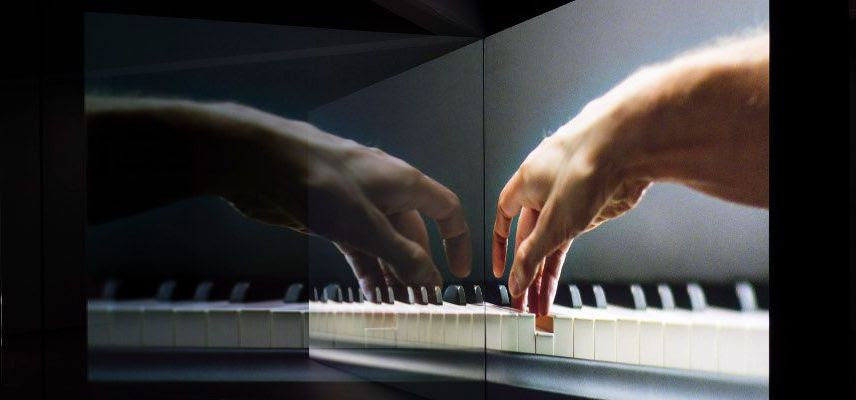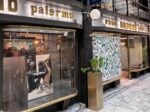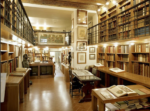#galleryathome – Anri Sala

Mostra personale
Comunicato stampa
The first phrase in the title chosen by Anri Sala for this new exhibition – AS YOU GO –implies the idea of movement: that of a time-based work, informed by music and moving images; and that of the visitors, who Sala implicitly encourages to keep moving and hence partake in the making of their own individual experience of an exhibition that bears a certain resemblance to a performative stage.
In many Western languages, the expression “building castles in the air” refers to making unrealistic, over ambitious plans. The French, however, build their castles in Spain –one says “construire des châteaux en Espagne”-. A new exhibition is always the occasion for an artist to explore new formal territories. While the prospect may be quite exciting, it may also prove daunting: experimentation is risky and staging a complex project is always open to an almost magical component. Meanwhile, for a visitor, delving into the new work of an artist can be equally challenging. In fact, one could think of the encounter of the artist’s proposal and the visitor’s perception as something almost improbable.
The action imagined by Anri Sala takes place in three different sets. The first consists of a video display system of cinematic proportions. Here, he posits a new way of looking at moving images: three pairs of videos, all related to the interpretation of music, glide over a 30-metre screen whose shape alludes directly to the building. Sala has choreographed the left-to-right movement of the moving images, using blank intervals to create a specific visual rhythm, as well as two translucent screens placed beside the main screen, one on each side. This creates a sensation of double vision, enabling the public to be surrounded by the image as it walks in-between the two screens.
Going south, one enters a gallery where the main protagonist is the bay of Santander. Here Sala has installed No Window No Cry (Renzo Piano & Richard Rodgers, Centre Pompidou, Paris), a fragment of the famous Parisian museum where he once presented his work. The displaced window enables him to stage the view as if it were his own work. In that sense, he revisits the veduta, a classic genre in Art History which dates back to the sixteenth century. Fixed on the window is a music box, which plays Should I Stay or Should I Go? by The Clash.
The third act takes place in the gallery placed exactly at the opposite end of the space. It features an anti-veduta of sorts: All of a Tremble (Encounter I), a wall whose surface is covered with wallpaper, bars the view onto the city. The hand drawn patterns of the wallpaper seem to have been printed by the machine affixed to the wall. One cannot tell whether the machine is actually printing the wall, or performing a strange, somewhat repetitive musical score. Upon closer examination, one realizes that the machine stands still, and two half rollers once used to print wallpaper activate specially designed pins, transforming the patterns into a tune. One is faced with yet another experience of synaesthesia: it remains unclear whether the sound informs the image, or whether it is the other way around.
Curated by Benjamin Weil, art director of Centro Botín.
About Anri Sala
Anri Sala (Tirana - Albania, 1974), considered one of today’s most influential contemporary artists. He studied at the National Academy of Arts from 1992 to 1996 and in 1996-98 he studied video at the École Nationale Supérieure des Arts Décoratifs in Paris. In 1998-2000 he attended the Postgraduate Studies in film directing, Le Fresnoy, Studio National des Arts Contemporains, Tourcoing. He currently lives and works in Berlin.
His work explores non-verbal forms of communication with innovative narrative techniques which he builds by means of the moving image, music, sound and the architecture of the exhibition space, creating a highly sensorial immersive experience for visitors.
Recent solo exhibitions include: AS YOU GO, Castello di Rivoli, Turin, Italy (2019); The Last Resort, Garage, Moscow (2018); Anri Sala, Museo Tamayo, Mexico City (2017); Anri Sala: Answer Me, New Museum, New York (2016); NO NAMES NO TITLE, The Helena Rubinstein Pavilion for Contemporary Art, Tel Aviv Museum of Art, Tel Aviv, Black Box: Anri Sala, The Baltimore Museum of Art, Baltimore, The Present Moment, Middle Hall, Haus der Kunst, Munich (2014); Ravel Ravel Unravel, French Pavilion, 55th Venice Biennale, Venice (2013); Anri Sala: Louisiana, Louisiana Museum of Art, Humlebaek; Anri Sala, Centre Pompidou, Paris (2012); Anri Sala, Serpentine Gallery, London (2011).
Sala has received the Vincent Award (2014), the 10th Benesse Prize (2013), the Absolut Art Award (2011), and the Young Artist Prize at the Venice Biennale (2001). He has taken part in many group exhibitions and biennials, including the 57th Venice Biennale (2017), the 12th Havana Biennial (2015), the Sharjah Biennial 11 (2013), the 9th Gwangju Biennale (2012), dOCUMENTA(13) (2012), the 29th São Paulo Biennial (2010), the 2nd Moscow International Biennale of Contemporary Art (2007), and the 4th Berlin Biennial (2006).
About Centro Botín
Research, training and dissemination are the three main missions of the Centro Botín and they are developed through our Fine Arts and Training programmes. In both areas, collaboration with leading entities and professionals plays a key role. This has ensured a very high quality standard for our cultural programme.
The conclusions drawn from the research projects are reflected in the different activities that we organise, such as workshops, and are also published in catalogues, books and international magazines and in different formats that are accessible to the general public.
The Fundación Marcelino Botín was created in 1964 by Marcelino Botín Sanz de Sautuola and his wife, Carmen Yllera, to promote social development in Cantabria. Fifty years later, having kept its primary focus on the region, the Fundación Botín now operates all over Spain and Latin America, contributing to the overall development of society by exploring new ways to uncover and support creative talent, in order to create cultural, social and economic wealth.
The Fundación organises programmes in the realms of the arts and culture, education, science and rural development, and supports social institutions in Cantabria so as to reach those who need it the most. It also offers a space for reflection and action to detect and develop new talent.



